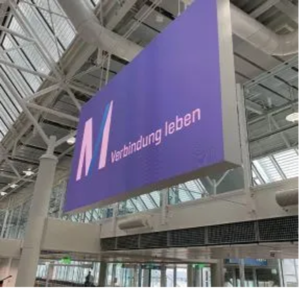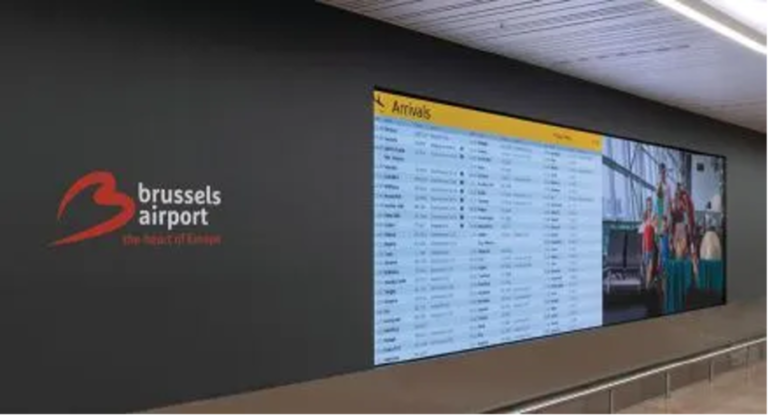Simon Hayes, business segment lead transportation at Sharp/NEC, reveals how the company’s reliable display technology can create sustainable and profitable advertising spaces for a range of airport terminals.

What solutions will Sharp/NEC have on show at PTE 2024?
Harnessing efficiencies is critical for airport operators, and we have chosen two key solutions that demonstrate exactly how Sharp/NEC’s product development is driving improved use of resources. Mindful of sustainability targets, we will show how we are innovating to reduce energy use with our third-generation LED FE Series.
This solution delivers a 60% reduction in power demand compared with the previous series. We will also show our modular large-format displays with integrated computing options, focusing on the low-cost Raspberry Pi 4.0, which is proven for performance, reliability and security. However, we are not just about our hardware.
Through our close collaboration with AODB and CMS partners – alongside our 20 years of experience designing and engineering solutions for airport environments – we hope that visitors to Passenger Terminal Expo will recognize that with Sharp/NEC they are getting peace of mind.
What are the key advantages of this technology?
We cannot stress enough how long-life reliability is fundamental in all sectors, but this is especially so in aviation. When your visual estate is vast and critical to the passenger experience, and indeed their safety, this must be the number-one priority. Sharp/NEC is a trusted provider and we work hard to uphold our reputation – this is neither new nor innovative, but unfailingly dependable.
We have screens in many airports that have been running for eight years and longer; this illustrates the quality of our products. This long life, plus the option to upgrade the computing power within, means our solutions continue to meet performance expectations well beyond the standard. At Vienna Airport in Austria there are dual NEC FIDS operating 24/7 that are 17 years old.
What are the sector’s most important trends or challenges at the moment?
We can’t really call sustainability a trend; it is integral to everything but is certainly a challenge. Committed to net zero carbon emissions from operations fully within their own control by 2050, Europe’s airports are working hard to reduce energy consumption. Airports are recognizing the long-life benefits of dvLED and it has become a key technology moving forward – and the number-one choice where appropriate for the installation. ePaper is a new technology that is set to revolutionize digital signage by achieving power consumption of 0W during use – a groundbreaking step.
A recent collaboration between Sharp Corporation and E Ink Holdings puts us firmly in the driving seat as we work toward solutions for the carbonneutral era. Though not suitable in every instance, E Ink is ideal for static information displays. The content is sent once and the screen can display that information without the need for power until the content changes. Uses range from bus schedules and airport check-in or gate info, to basic wayfinding. Airports are very interested in all of our future product developments here.
How can airports create the best return on investment for their display solutions?
Every airport, large or small, has blank or empty space that could be turned into a dynamic, profitable digital environment, with advertising space generating much-needed revenue streams. Brand owners benefit from an exceptional advertising medium with endless audience potential, and the airport operator can quickly reap the financial rewards. dvLED tech is becoming the preferred solution for multipurpose digital signage throughout the airport. It is light, scalable to vast proportions, and provides excellent image quality in terms of contrast and brightness – desirable in light-flooded terminals.
Airports need dvLED solutions that can run for 10 years, sold by a reliable partner that will still be there to provide service and support, with spare parts availability to ensure continued peak performance over this exceptional lifetime. Airports operate continuously, are mission-critical, and need digital displays that can match this expected level of performance.
This article originally appeared in the January 2023 issue of Passenger Terminal World. To view the magazine in full, click here.

